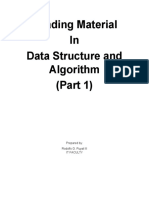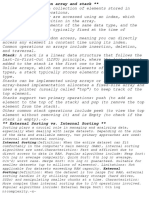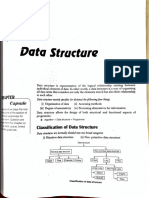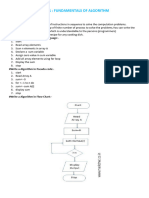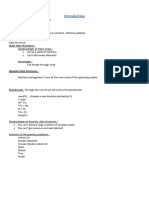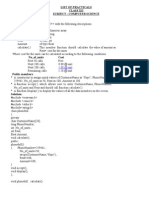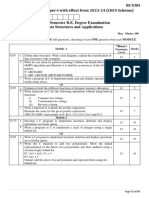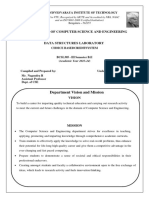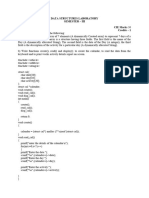0% found this document useful (0 votes)
12 views10 pagesDatastructure Module1
The document provides an introduction to algorithms, defining them as finite, precise, and efficient sequences of steps to solve problems, and discusses algorithm efficiency through time and space complexity. It covers asymptotic notations (Big-O, Omega, Theta) for analyzing running time and introduces various data structures, including arrays, stacks, and queues, along with their operations and applications. Additionally, it highlights the time-space tradeoff in algorithm design and the importance of choosing appropriate data structures for efficient data organization.
Uploaded by
wnlfalcon77Copyright
© © All Rights Reserved
We take content rights seriously. If you suspect this is your content, claim it here.
Available Formats
Download as PDF, TXT or read online on Scribd
0% found this document useful (0 votes)
12 views10 pagesDatastructure Module1
The document provides an introduction to algorithms, defining them as finite, precise, and efficient sequences of steps to solve problems, and discusses algorithm efficiency through time and space complexity. It covers asymptotic notations (Big-O, Omega, Theta) for analyzing running time and introduces various data structures, including arrays, stacks, and queues, along with their operations and applications. Additionally, it highlights the time-space tradeoff in algorithm design and the importance of choosing appropriate data structures for efficient data organization.
Uploaded by
wnlfalcon77Copyright
© © All Rights Reserved
We take content rights seriously. If you suspect this is your content, claim it here.
Available Formats
Download as PDF, TXT or read online on Scribd
/ 10

